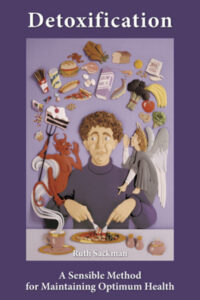The nutritional value of melons is immense. The many varieties of the popular melon give us certain elements not found in any other food. The honeydew melon originated in Asia, and it is believed that, as early as 2,400 B.C., this distinct type of muskmelon was growing in Egypt. The cantaloupe is native to India and Guinea and has been cultivated for more for more than 2,000 years. In Europe, it was first grown from seed transported from its native habitat.
The highly alkalizing honeydew was introduced to America in 1900 and Arizona and California have become the biggest producers. It is available the year around, but it is at its peak of abundance in July through September. The cantaloupe is available from late May through September, but is most abundant in June and July.
Both the honeydew and the casaba, which is another variety of winter melon, are usually picked before maturity and ripened off the vine. Cantaloupe, however, do not develop any additional sugar after they are picked. This melon should be picked when it is still hard and pulls off the vine smoothly, without leaving a jagged scar.
Learn to select melons by the color and firmness of their rind, and by fragrance. The cantaloupe may have a coarse netting over its surface (with a yellow, not green color beneath when ripe), or it may be of fine texture, depending again upon variety. Choose cantaloupe for their sweet fragrance. The casaba rind is golden in color and should feel heavy when ripe. A ripe honeydew has a creamy yellow surface color, and usually the scar in the blossom end yields to slight pressure.
The coloring of the flesh also is important, both as to degree of ripeness and to pleasing the eye and thus the palate. When fully ripe, casaba melons are cream in color, honeydews a yellowish cream in color, and cantaloupes either a light or dark shade of salmon, depending upon variety. Deeply colored flesh in the melon denotes that it will be high in vitamin A.
It is important to pick a thoroughly ripe watermelon in order to receive the greatest benefit. A ripe watermelon, when thumped with the fingers, has a dull, hollow sound. Another test of a good ripe melon is to try to scrape the rind with the fingernail; when the green skin comes off easily, the melon is ready to be eaten. Good watermelon has firm, crisp, juicy flesh and is never dry or fibrous.
Melons are very high in silicon, especially if eaten right down to the rind. When we discard watermelon rind, we are missing one its greatest elements. To obtain the gland- and blood-building chlorophyll, run the rind through a liquifier or juicer.
Watermelon, of course, is well-known as an efficient eliminator. Because it has such a high content of water and soluble chemicals, it can go into the bloodstream quickly and reach many of the organs of the body, depositing the chemicals needed to carry away waste.
During melon season, we should strengthen the body for the winter months with a “melon reserve” of vitamins A, B, and C, which are found in delightful form in the melon family.
THERAPEUTIC VALUE of Melons
Melon gives us an excellent supply of distilled water, along with the finest mineral elements possible. Many of us think we are drinking enough water, but our city water supplies do not give us “pure” water. Melons with their root system, pick up water from deep, in-ground reserves, and bring it to our tables in a delicious fruit substance. Consider the melon for rejuvenation and alkalinizing the body. Melons also are excellent for aiding elimination.
NUTRIENTS IN ONE POUND of Melons
Calories: 65
Protein: 1.0 g
Fat: 0.4 g
Carbohydrates: 14.4 g
Calcium: 15 mg
Phosphorus: 25 mg
Iron: 0.4 mg
Vitamin A: 1,240 I.U.
Thiamine: .10 mg
Riboflavin: .11 mg
Niacin: 0.4 mg
Ascorbic acid: 13 mg





